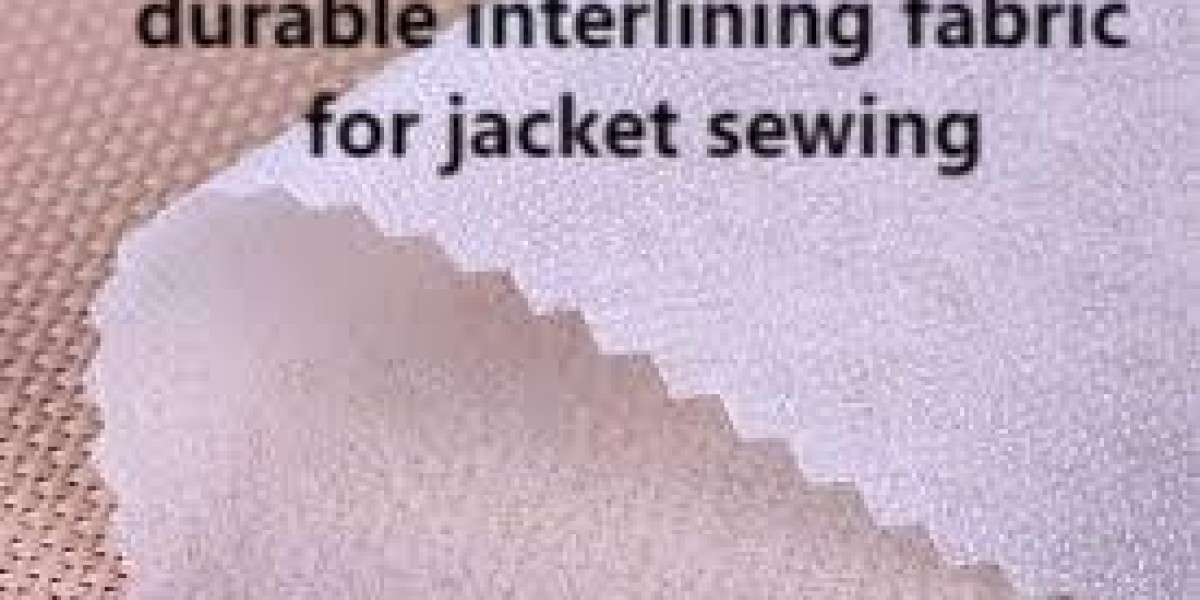In modern garment construction, the hidden layer that gives shape and stability matters more than many realize; the right Interlining specified at the prototype stage prevents distortion and improves end-user satisfaction, and using a compatible Interlining reduces pressing issues, lowers scrap rates, and streamlines assembly. This introduction outlines how manufacturers and designers evaluate substrates, bonding methods, testing, environmental impacts, and lifecycle thinking to turn a functional layer into a competitive advantage.
Material Selection and Fabric Compatibility
Choosing the right substrate starts with understanding face-fabric behavior. Woven backings add dimensional control for tailored garments, knitted variants provide stretch and recovery for activewear, and nonwovens deliver uniform thickness and cost-effective performance for high-volume production. Fiber content—natural, synthetic, or blends—affects ironing windows, adhesive selection, and laundering resilience. Properly matched materials reduce show-through and maintain hand, preventing unwelcome changes during wear.
Bonding Technologies and Process Control
How the support layer adheres to a garment defines durability. Fusible adhesives, hot-melt coatings, stitch-through options, and ultrasonic bonding each present trade-offs. Heat-activated systems require tightly controlled press temperature, pressure, and dwell time; too hot and the face fabric may scorch, too cool and adhesion fails. Inline monitoring, calibrated press cycles, and documented process windows help technicians reproduce prototype results consistently on high-speed lines.
Balancing Hand, Drape, and Structural Function
Designers must balance tactile quality with structural aims. Thicker supports deliver crisp collars and stable lapels, while lighter options preserve natural drape in flowing silhouettes. Measuring stiffness, compressibility, and thickness uniformity predicts how panels will hang and how hems finish. Many brands employ graded reinforcement—heavier weights at collars and lighter weights across body panels—to achieve a refined silhouette without unnecessary bulk.
Testing Protocols and Quality Assurance
Rigorous testing prevents costly surprises after scale-up. Standard assays include adhesion peel and shear, repeated laundering cycles, thermal aging, and dimensional stability under pressing. Inline thickness gauges and bond-coverage imaging catch deviations early, while batch test reports simplify approvals. Suppliers that include standardized sample lots and test certificates support faster vendor qualification and fewer line stoppages during ramp-up.
Environmental Impact and Sustainable Alternatives
Sustainability is increasingly central to sourcing decisions. Recycled fibers, water-based adhesives, and lower-energy bonding processes reduce environmental footprints while maintaining performance. Conducting lifecycle assessments clarifies trade-offs between initial production impact and durability benefits over garment lifetime. Designing for disassembly—selecting adhesives and backings compatible with recycling streams—supports circularity goals and aligns with brand-level sustainability commitments.
Integration With Production Workflows
Specifying reinforcement early in technical packs avoids last-minute substitutions that trigger assembly issues. Pre-kitting, registered laminates, and graded support strategies reduce changeovers. Training press operators on precise temperature profiles and dwell times preserves bond integrity; documented pressing windows prevent process drift. Clearly labeled pattern pieces with reinforcement codes streamline sewing operations and minimize rejects in finishing.
Supplier Collaboration and Risk Mitigation
Price should not be the sole criterion for sourcing. Evaluate partners for batch consistency, transparency in technical data, and capacity to support scale-ups. Joint development programs reduce surprises during production ramp-up, and maintaining a qualified second-source list mitigates shortages. Include critical tolerances—thickness, adhesion, thermal processing—in contracts to ensure continuity under demand spikes.
Practical Guidance for Designers and Specifiers
Start with a clear functional brief—whether shape retention, insulation, reinforcement, or opacity—and prototype candidate laminates with the actual face fabric through representative care cycles. Require batch test reports and set acceptable tolerance bands for thickness and adhesion. Use graded stabilization in complex patterns to distribute support where needed and document press parameters so production teams can reproduce trial results reliably.
Conclusion and Further Resources
The unseen layer beneath the outer fabric plays a quiet but decisive role in garment quality. By combining careful material selection, robust bonding processes, thorough testing, and early cross-functional collaboration, design and production teams convert this component into a measurable advantage in fit, finish, and durability. For detailed technical references and practical application guidance, visit https://www.interlining-factory.com/news/what-is-interlining-types-applications-and-more.html








